Standing tall across Seoul city’s backdrop, Bukhansan boasts stunning views and a rich history during the Joseon period, when it stood as the Northern boundary to Seoul. Abigail Mattingly climbs the mountain to find some unexpected scenarios, including ramen, beer – and a lot of friendly old men.
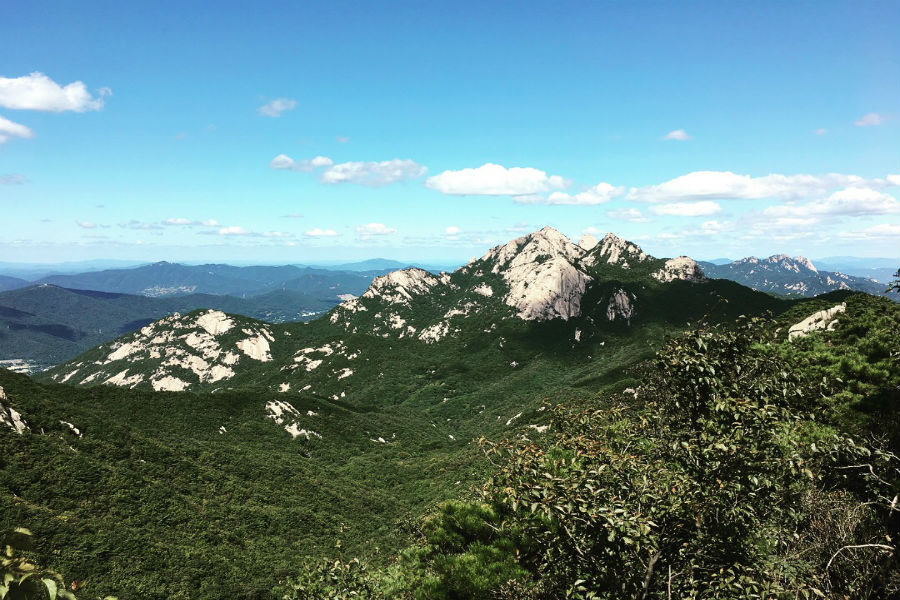
A view of the mountains of Bukhansan (Photo: Abigail Mattingly)
Bukhansan is a natural part of the cityscape in South Korea’s capital. Its highest peak is 2,700 meters above sea level. It casts a distinctive shadow of oddly curved lumps and bumps with varying heights and densities, coloured deep green by the thick trees, and a shade of sand made up of clumsily shaped boulders that look like they could tumble off and roll down the mountain at any minute.
Kristin and I had both arrived in Seoul at the same time, around two years prior to our decision to climb Bukhansan. Autumn was in the air as we sat sipping hot coffee. The autumn seems to come abruptly here, and with little transition period; once that cool breeze fills the air it doesn’t leave, and the trees begin their annual shedding ceremonies as the sweltering summer is left behind. We would both be leaving Seoul in the next year or so, meaning this autumn would be our last chance to climb the mountain in reasonable weather conditions. It was time for the mountain to be conquered.
Upon our chosen morning, we set off early to the foot of the mountain, just a short bus ride from the city centre, eagerly anticipating some time in the great outdoors, after being choked by Seoul’s smog for too long. Although the signage wasn’t clear as we alighted the bus, it wasn’t hard to find our way – it seemed that the mountains of Korea leave their own trail of breadcrumbs, in the form of kimbap stores, and kitted-out ajummas and ajusshis.
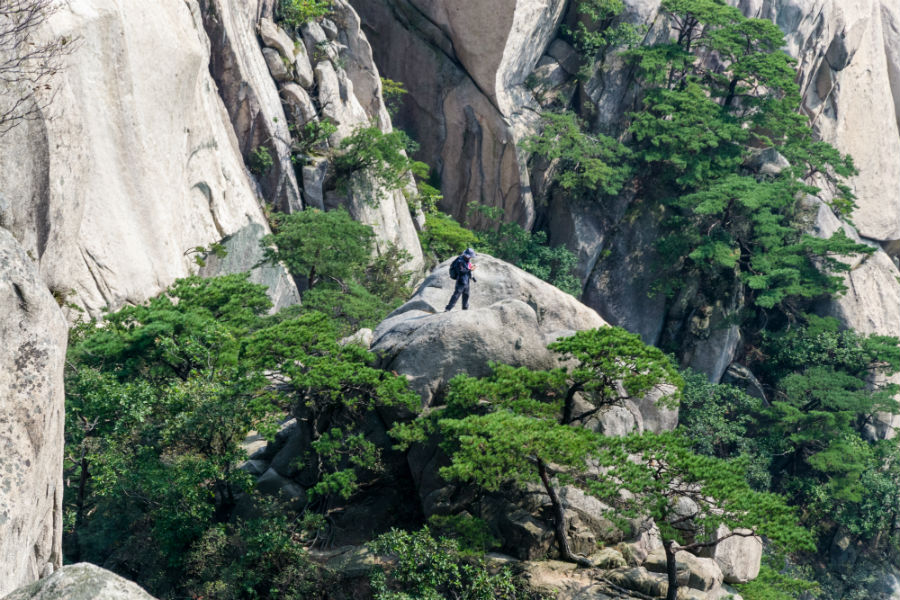
An ajumma finding her own path (Photo: D. Convertini via Flickr)
Ajummas and Ajusshis
Ajummas and ajusshis are, respectively, older women and men in Korea, and – strictly speaking – married. However, it can sometimes be quite offensive to call a young married person by these terms, so ajummas and ajusshis usually fall into the category of being relatively close to, if not already in, retirement age.
In Seoul, and South Korea generally, the older generation keep extremely active. You’ll find them dancing in neon aerobics gear at local parks with their friends, making use of government provided outdoor gym equipment in open spaces, and, of course, climbing mountains. They will turn up to the trail of a mountain decked out in high end hiking gear, from the khaki sunhat right down to the mountain boots, complete with walking sticks. They make every mountain look like Everest. Not only do they look incredible, but their attitudes are usually as such, too. They approach the climb with every inch the energy of a twenty-five year old, if not more, and they know how to have a good time whilst they’re doing it, warmly greeting every person they pass as though they were a family member or close friend, and often stopping for snacks and a good chatter.
Climbing the well-worn paths up and down Bukhansan is relatively easy for your average, healthy person. It doesn’t carry the same achievement of climbing Mount Fuji, and it’s clearly no Everest. The saying goes, “it’s not about getting to the top, it’s about the climb”. Well, Bukhansan turned out to be the opposite of that norm. The climb to the top of Bukhansan was – that dreaded, plain word – nice. It was relatively easy, with city views framed by canopies of trees and gaps in the ruins of old fortresses that wind across the mountain. But it turns out that the real party is at the top of the mountain.
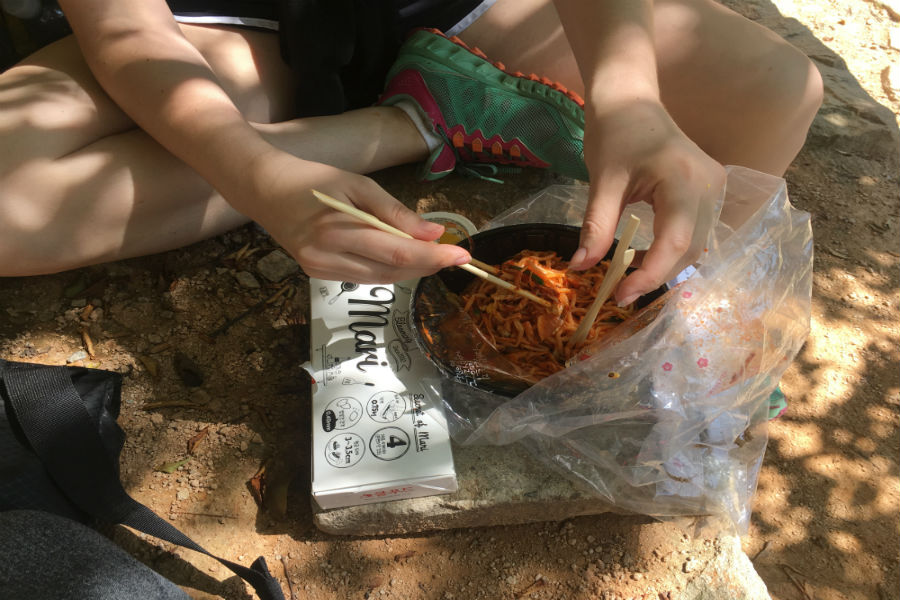
Noodles atop the mountain (Photo: Abigail Mattingly)
Mountain Top Noodles
The true experience of Bukhansan began as we started our search for a picnic spot. Brushing past overhanging trees we stepped through a clearing into an area of relatively flat terrain which was, to our surprise, filled with a social buzz akin to the city centre. The area was bustling with hikers sat around in large groups enjoying cans of chilled Korean beer and eating ramen, and the space was filled by the sound of chatter and laughter.
The most valuable piece of information learned from hiking in Korea? Ramen is the ultimate hiking snack. Sure, sandwiches are okay for a packed lunch: simple, easy, convenient. But noodles? The grease, fat and carbohydrates are exactly what your body needs after burning so many calories walking, and it feels like such a well-deserved treat. Most people bring dehydrated ramen in a paper tub from the convenience stores, and a thermos flask filled with boiling water to cook them at the mountain peak.
We didn’t much fancy lugging a full thermos up the mountains between us, so the night before, we ordered ‘naengmyeon’, cold Korean glass noodles, from a local take-out joint with some ‘kimbap’ (a rice and vegetable snack wrapped in a layer seaweed) and packed it in our bags. Before we knew it, we’d opened our naengmyeon and started a social gathering of our own, initiated by a common ground of noodles, with passers-by stopping to offer to share their food and beer with us.
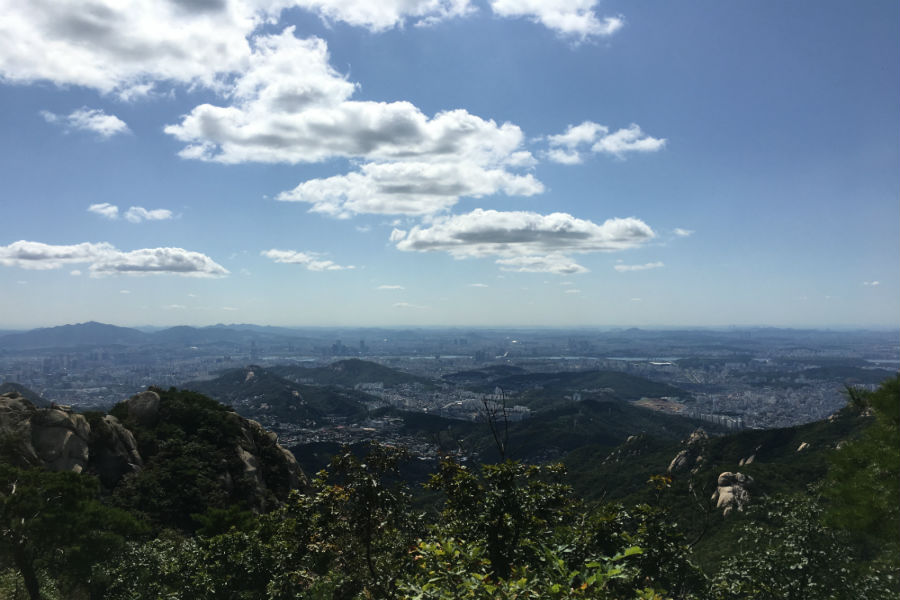
City views from the top of Bukhansan (Photo: Abigail Mattingly)
All Downhill
After taking in panoramic views of the city and the surrounding mountains, we began to make our way back down the mountain, but there was one slight problem: we’d walked off the correct path and couldn’t quite seem to get back to it. One friendly ajusshi attempted to lead us down the same way as he was heading, but the trail seemed to disappear from under our feet – from here on out, it was a jumble of rocks and boulders which seemed to have little stability. He seemed to have no problem with this, taking every loose rock in his stride. We tried to keep up with his speedy pace, but eventually he became lost to the mountain, and we were on our own again.
The sun was setting. Our next plan? Just head down – in any direction. We spent the next few hours sliding on loose rocks on our hands and knees and crossing over, thankfully, dried out streams. It was an experience we weren’t expecting to have on a well walked mountain, but nonetheless – laughing at each other falling over and helping each other back up again: there was something innately childlike about it.
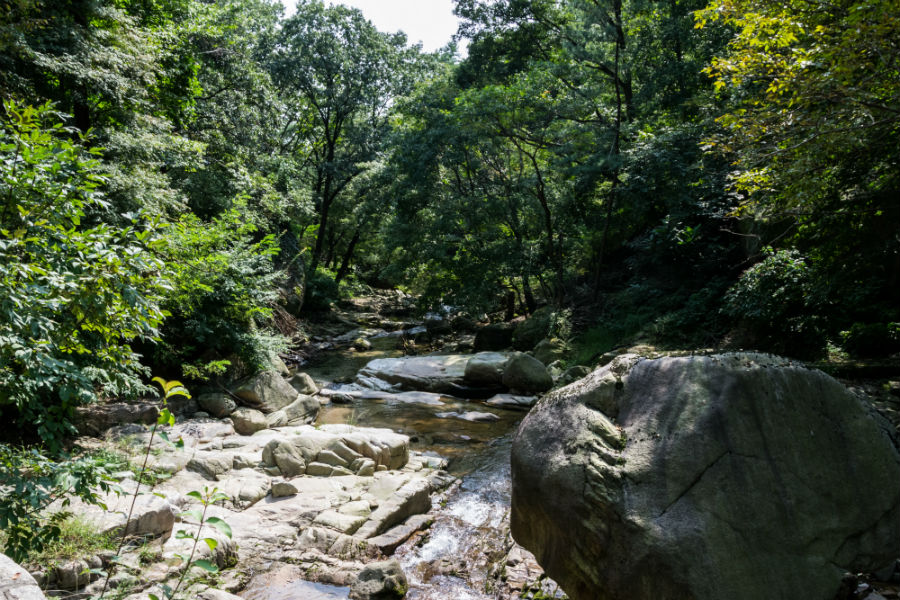
The rural route down, where the path merges with a stream (Photo: D. Convertini via Flickr)
Upon making our way through a clearing in the trees, we caught sight of a beautiful, brightly decorated temple, painted with mostly primary colourings and intricate designs. Despite being exhausted, the temple was too stunning to resist exploring. The serenity amongst the mountains and the understated presence of it not being a tourist destination made it all the more special.
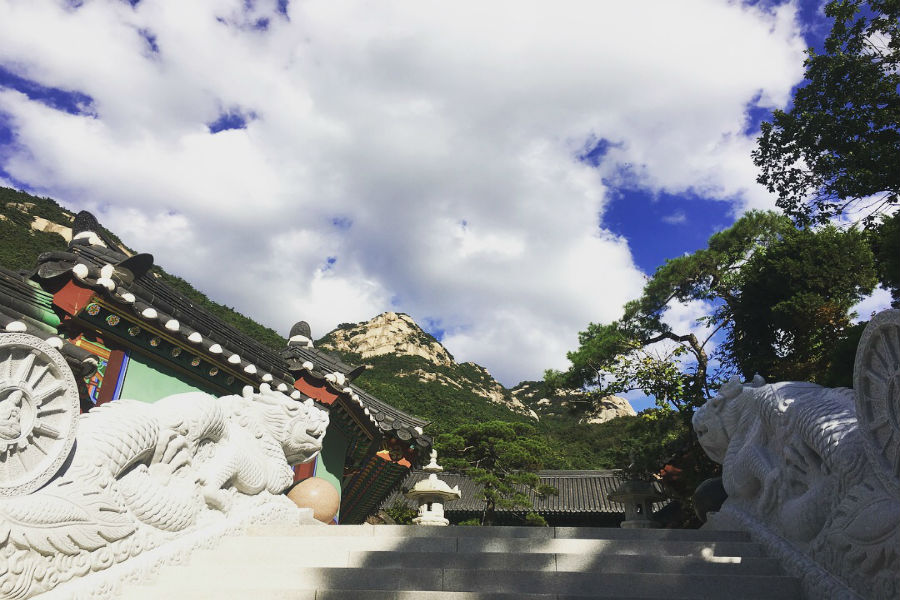
The temple at the foot of Bukhansan – a sign of hope, and relief (Photo: Abigail Mattingly)
The foot of Bukhansan mountain is full of small, outdoor cabin style restaurants and cafes, ranging from barbecue restaurants to food stalls. It wasn’t quite time for an evening meal yet, so we settled on ice pops from a stall ran by an old lady. We made our way back to the bustle of the city centre with Bukhansan crossed off our Seoul bucket lists, and a whole new way of looking at the process of hiking as not just physical labour, but an active way to enjoy the community and forge new friendships.
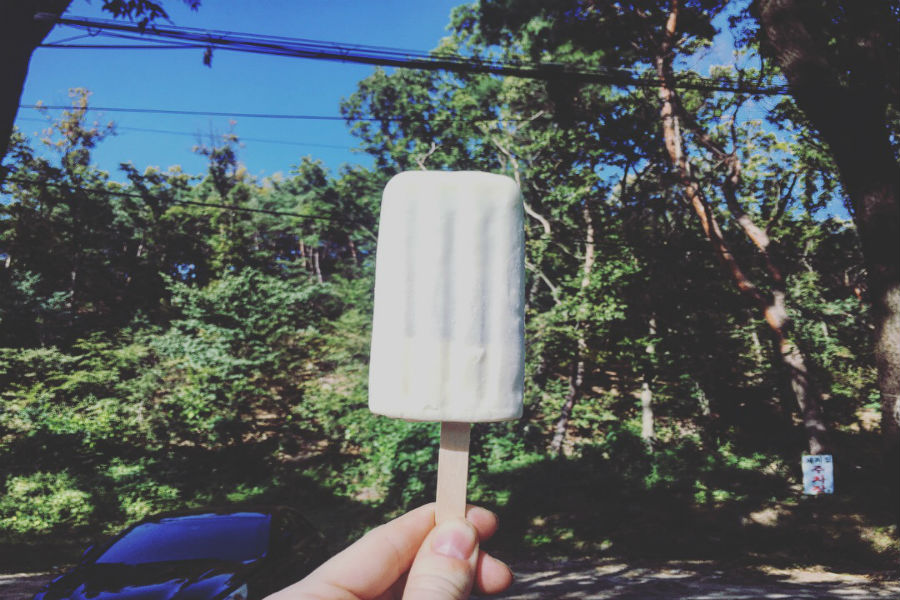
A well-deserved treat from the ice-cream ajumma at the foot of the mountain (Photo: Abigail Mattingly)